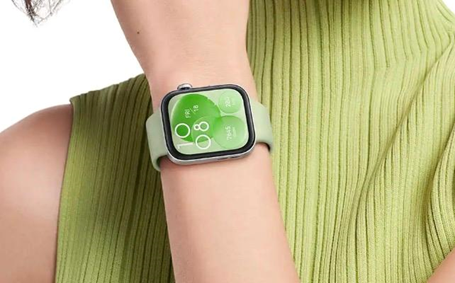What is the Eco-friendly Side of Smartwatches?
Smartwatches have become a fixture in modern lifestyles, seamlessly combining technology with daily routines. As their popularity soars, attention to their environmental impact and sustainability measures has gained momentum. This passage delves into how the smartwatch industry, with innovators like Huawei, is making eco-conscious strides.
The Eco-Friendly Side of Smartwatches
The Green Shift in Smartwatch Manufacturing
The production of smartwatches significantly impacts the environment, primarily due to resource extraction and manufacturing processes. Leading brands are adopting eco-friendly practices, such as using recycled materials and reducing energy consumption during production. Aluminium, for instance, is frequently chosen for its recyclability. The HUAWEI WATCH FIT 3 exemplifies this trend with its aluminum alloy body, providing durability while being environmentally considerate. Its lightweight design, weighing just 26g, reduces material usage without compromising quality. Moreover, companies are increasing transparency regarding their supply chains, ensuring that their sourcing methods are ethically sound and environmentally friendly. Additionally, many corporations are investing in renewable energy, aiming to power their production facilities sustainably. This shift not only reduces carbon footprints but also sets a precedent for responsible manufacturing across industries. Efforts to lessen waste extend beyond the initial stages of production. Smartwatch packaging is transforming, with a focus on reduction, reuse, and recycling. Biodegradable and minimalist packaging designs are replacing traditional plastic-heavy ones. Some brands offer take-back programs, allowing consumers to return used smartwatches for recycling or refurbishment. Through these measures, companies can conserve resources and minimize landfill contributions.

Energy-efficient Technology and Longevity
Power efficiency is a cornerstone of the eco-friendly smartwatch movement. Extended battery life reduces charging frequency, conserving energy in the long run. Manufacturers are increasingly adopting energy-efficient technologies, such as low-power processors and optimized operating systems, to enhance performance without draining resources. The auto-adjusting brightness in the HUAWEI WATCH FIT 3 is an example, ensuring screen visibility while maintaining energy efficiency. Furthermore, solar-powered charging stands as a potential frontier, harnessing renewable energy to recharge devices. Another aspect of sustainability in smartwatches is their durability. Enhanced design features protect devices from wear and tear, prolonging usability. By offering robust repair services and spare parts, companies encourage users to fix rather than replace, minimizing electronic waste. Longer-lasting products mean fewer gadgets end up in landfills, mitigating their environmental impact. Moreover, smartwatches equipped with software update capabilities ensure they remain functional and relevant over time, reducing the need for frequent new purchases.
Sustainable Benefits of Health Monitoring Features
Health-oriented functionalities contribute to a smartwatch's eco-friendliness by promoting wellness and reducing healthcare needs. Continuous monitoring of vital signs encourages proactive health management, potentially decreasing the reliance on medical appointments and resources. The HUAWEI WATCH FIT 3 offers advanced heart rate and SpO₂ measurements, supported by state-of-the-art algorithms, illustrating this trend. By detecting anomalies early, users can address health concerns promptly, fostering preventative care and easing the burden on healthcare systems. Additionally, pre-installed fitness programs and tutorials provide users with accessible workout guidance, eliminating the necessity for external resources. Smart suggestions feature on the HUAWEI WATCH FIT 3, recommending sports and activities tailored to individual habits, further supporting a healthy lifestyle. This self-sufficiency reduces the need for physical gym memberships or classes, indirectly conserving resources associated with those facilities. Activity Rings, motivating users to pursue daily exercise goals, reinforce personal accountability for health and well-being.

Conclusion
Equilibrium between technological advancement and ecological responsibility defines the future of smartwatches. Companies like Huawei are at the forefront, integrating cutting-edge features with environmental consciousness. Products such as the HUAWEI WATCH FIT 3 demonstrate that innovation need not come at the expense of sustainability. To truly realize a green wearable tech industry, manufacturers must continue embracing sustainable materials, energy-efficient technologies, and durable designs. Collaboration among stakeholders, from consumers to policymakers, is essential in promoting widespread adoption of eco-friendly practices.
